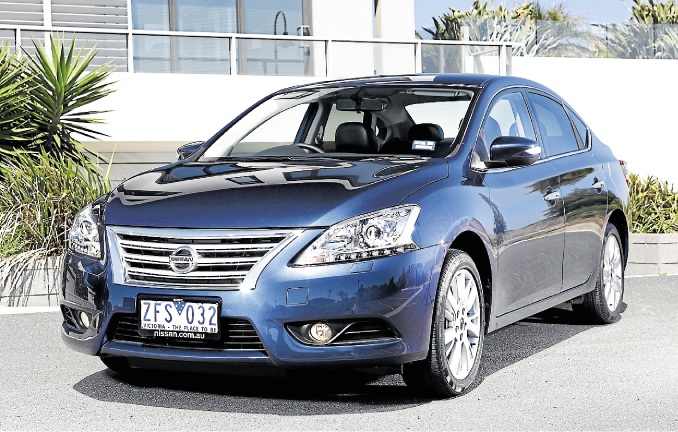The name ‘Pulsar’ is back in the Nissan fold, replacing the much-unloved ‘Tiida’ tag to the delight of just about everyone in any way connected with Nissan in Australia — be they owners, buyers or sellers.
The subject of this road test is a top-of-the-line 1.8-litre Pulsar Ti sedan. Four doors are the only body type on offer at this time. Pulsar hatch, including the sporty SSS powered by a 1.6-litre turbocharged direct injection engine, is due Down Under mid-year.
The five new Pulsar sedans range from just $19,990 to the $28,990 Ti we drove, and there is plenty to choose from both in features and price.
The Pulsar has Nissan’s new style trapezoidal radiator grille and large wraparound headlights. Riding on 17-inch alloy wheels, the Pulsar Ti’s low stance and belt line add to its appearance of length.
The new Pulsar comes in three specification levels: ST, ST-L and Ti. They can be ordered with either a six-speed manual gearbox or Nissan’s new Xtronic CVT (continuously variable transmission) offering smoother acceleration and broader gear ratios than a conventional automatic.
Interior space is impressive. New Pulsar has a longer cabin than its main rivals, making for extensive rear-seat legroom.
Soft-touch segments — dashboard and driver’s door armrest — plus leather seat accents imbue the cabin with a feeling of quality.
Pulsar’s 1.8-litre four-cylinder engine develops peak power of 96kW and maximum torque of 174Nm. It’s mated with a CVT, resulting in a quiet, continuous delivery of power.
During extended open road cruising ‘our’ Nissan Pulsar Ti used five to six litres per 100 kilometres. In town it recorded nine to 10 litres per hundred.
It’s still early days, but it’s already looking as though dumping the Tiida and reintroducing the Pulsar is paying big dividends in sales.
It’s not just the name change that’s doing the work, our week in the Pulsar has impressed us with its competence in many fields.







